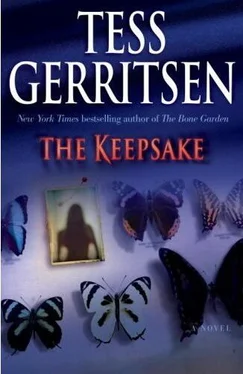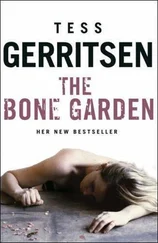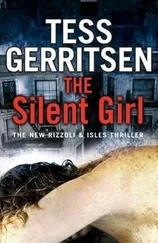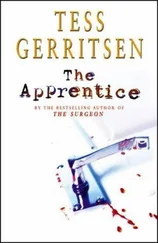“We were trying to pull that crate down, and I braced myself against the wall,” said Detective Tripp. “It kind of gave way behind me. And then I noticed that. ” He pointed toward the bricks.
“Crowe, shine your flashlight this way, so she can see it.”
Crowe aimed his beam and Jane frowned at the wall, which was now bowed outward. One of the bricks had fallen away, leaving a gap through which Jane could see only blackness beyond.
“There’s a space back there,” said Crowe. “When I shine my light through, I can’t even see a back wall.”
Jane turned to Robinson. “What’s behind these bricks?”
“I have no idea,” he murmured, staring in bewilderment at the bowed wall. “I always assumed these walls were solid. But it’s such an old building.”
“How old?”
“At least a hundred and fifty years. That’s what the plumber told us when he came to update the restroom. This was once their family residence, you know.”
“The Crispins?”
“They lived here in the mid-1800s, then the family moved into a new home out in Brookline. That’s when this building was turned into the museum.”
“Which direction does this wall face?” asked Frost.
Robinson thought about it. “That would be facing the street, I think.”
“So there’s no building on the other side of this.”
“No, just the road.”
“Let’s pull some of these bricks out,” said Jane, “and see what’s on the other side.”
Robinson looked alarmed. “If you start removing bricks, it could all collapse.”
“But this obviously isn’t a weight-bearing wall,” said Tripp.
“Or it would already have fallen.”
“I want you all to stop right now,” said Robinson. “Before you go any further, I need to speak to Simon.”
“Then why don’t you go ahead and call him?” said Jane.
As the curator walked out, the four detectives remained in place, a silent tableau poised for his departure. The instant the door shut behind him, Jane’s attention shot back to the wall.
“These lower bricks aren’t even mortared together. They’re just stacked up, loose.”
“So what’s holding up the top of that wall?” asked Frost.
Gingerly, Jane eased out one of the loose bricks, half expecting the rest of them to come tumbling down. But the wall held. She glanced at Tripp. “What do you think?”
“There’s got to be a brace on top supporting the upper third.”
“Then it should be safe to pull out these lower ones, right?”
“It should be. I guess.”
She gave a nervous laugh. “You fill me with such confidence, Tripp.” As the three men stood by and watched, she gently eased out another loose brick, and another. She couldn’t help noticing that the other detectives had backed away, leaving her alone at the base of the wall. Despite the gap she’d now opened, the structure continued to hold. Peering through, she confronted only pitch blackness.
“Give me your flashlight, Crowe.”
He handed it to her.
Dropping to her knees, she shone the beam through the gap. She could make out the rough surface of a facing wall a few yards away. Slowly she panned across it, and her beam came to a sudden halt on a niche carved into the stone. On a face that stared back at her from the darkness.
She stumbled backward, gasping.
“What?” said Frost. “What did you see in there?”
For a moment, Jane could not speak. Heart thudding, she stared at the gap in the bricks, a dark window into a chamber she had no wish to explore. Not after what she’d just glimpsed in those shadows.
“Rizzoli?”
She swallowed. “I think it’s time to call the ME.”
This was not Maura’s first visit to the Crispin Museum.
A few years ago, soon after her move to Boston, she had found the museum listed in a guidebook to area attractions. On one cold Sunday in January, she had stepped through the museum’s front door, expecting to compete with the usual weekend sightseers, the usual harried parents tugging along bored children. Instead she’d entered a silent building staffed by a lone docent at the reception desk, an elderly woman who had taken Maura’s entrance fee and then ignored her. Maura had walked alone through gallery after gloomy gallery, past dusty glass cases filled with curiosities from around the world, past yellowed tags that looked as if they had not been replaced in a century. The struggling furnace could not drive the chill from the building, and Maura had kept on her coat and scarf during the entire tour.
Two hours later, she had walked out, depressed by the experience. Depressed, also, because that solitary visit seemed to symbolize her life at the time. Recently divorced and without friends in a new city, she was a solitary wanderer in a cold and gloomy landscape where no one greeted her or even seemed aware of her existence.
She had not returned to the Crispin Museum. Until today.
She felt a twinge of that same depression as she stepped into the building, as she once again breathed in its scent of age. Though years had passed since she’d last set foot here, the gloom she’d felt on that January day instantly resettled upon her shoulders, a reminder that her life, after all, had not really changed. Although she was now in love, she still wandered alone on Sundays-particularly on Sundays.
But today’s official duties demanded her attention as she followed Jane down the stairs to the basement storage area. By now, the detectives had made the hole in the wall large enough for her to squeeze through. She paused at the chamber entrance and frowned at the pile of bricks that had been pulled loose.
“Is it safe to go in there? Are you sure it won’t collapse?” Maura asked.
“It’s supported by a cross brace at the top,” said Jane. “This was meant to look like a solid wall, but I think there may have been a door here at one time, leading to a hidden chamber.”
“Hidden? For what purpose?”
“To stash valuables? To hide booze during Prohibition? Who knows? Even Simon Crispin has no idea what this space was intended for.”
“Did he know it existed?”
“He said he’d heard stories when he was a kid about a tunnel connecting this building with one across the street. But this chamber’s just a dead end.” Jane handed her a flashlight. “You first,” she said. “I’ll be right behind you.”
Maura crouched at the hole. She felt the gazes of the detectives silently watching her, waiting for her reaction. Whatever waited inside that chamber had disturbed them, and their silence made her reluctant to proceed. She could not see into the space, but she knew that something foul waited in the darkness-something that had been shut away so long, the air within seemed rank and chill. She dropped to her knees and squeezed through the opening.
Beyond, she found a space just high enough for her to stand. Reaching out straight in front of her, she felt nothing. She turned on her flashlight.
A disembodied face squinted back at her.
She sucked in a shocked breath and jerked back, colliding with Jane, who had just squeezed into the space behind her.
“I guess you saw them,” said Jane.
“Them?”
Jane turned on her flashlight. “There’s one right here.” The beam landed on the face that had just startled Maura. “And a second one’s here.” The beam shifted, landing on a second niche, which held another face, grotesquely shriveled. “And finally there’s a third one right here.” Jane aimed her flashlight at a stone ledge just above Maura. The wizened face was framed by a waterfall of lustrous black hair. Brutal stitches bound the lips together, as though condemning them to eternal silence.
“Tell me these aren’t real heads,” said Jane softly. “Please.”
Читать дальше












